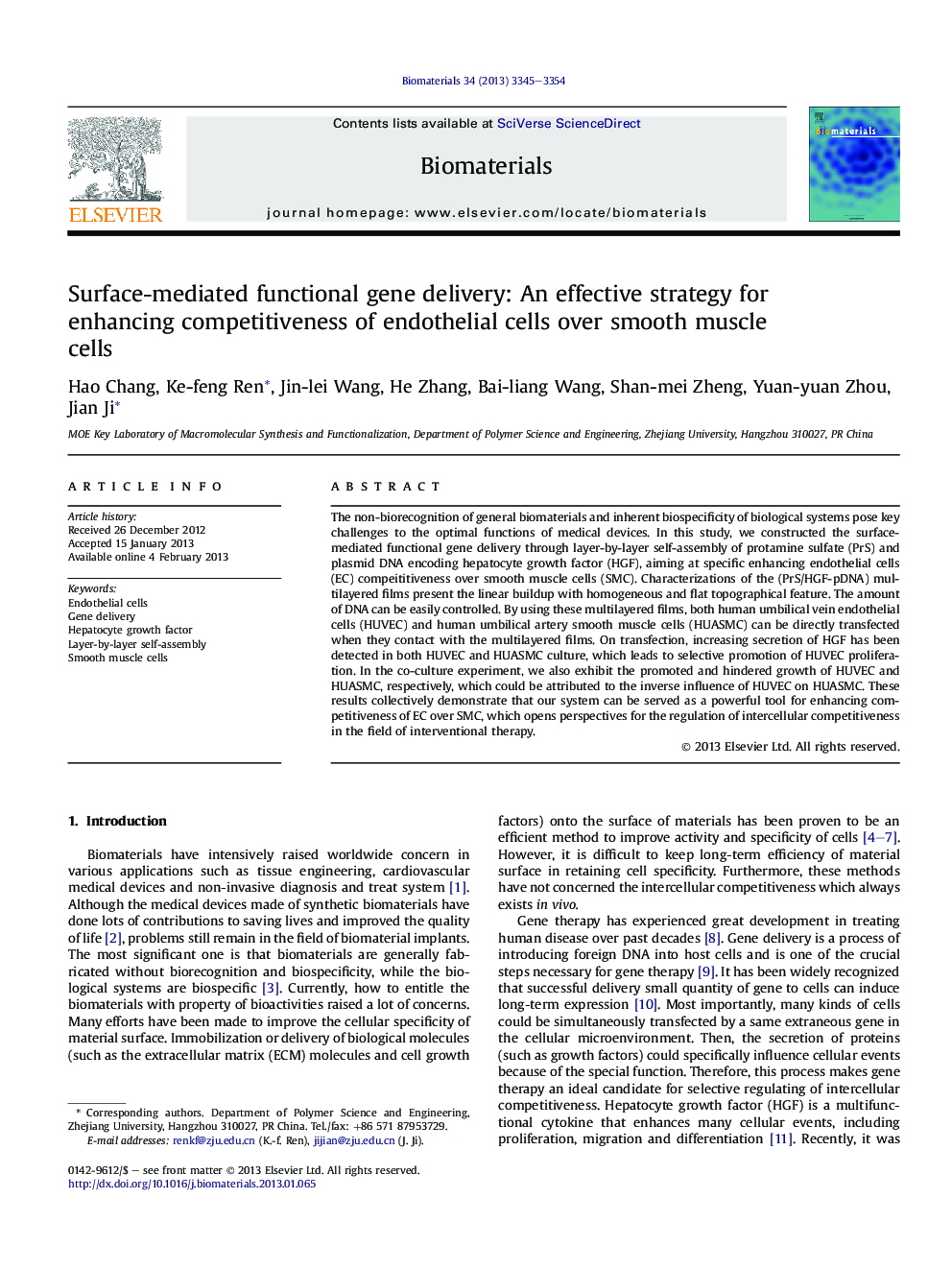| Article ID | Journal | Published Year | Pages | File Type |
|---|---|---|---|---|
| 10229177 | Biomaterials | 2013 | 10 Pages |
Abstract
The non-biorecognition of general biomaterials and inherent biospecificity of biological systems pose key challenges to the optimal functions of medical devices. In this study, we constructed the surface-mediated functional gene delivery through layer-by-layer self-assembly of protamine sulfate (PrS) and plasmid DNA encoding hepatocyte growth factor (HGF), aiming at specific enhancing endothelial cells (EC) compeititiveness over smooth muscle cells (SMC). Characterizations of the (PrS/HGF-pDNA) multilayered films present the linear buildup with homogeneous and flat topographical feature. The amount of DNA can be easily controlled. By using these multilayered films, both human umbilical vein endothelial cells (HUVEC) and human umbilical artery smooth muscle cells (HUASMC) can be directly transfected when they contact with the multilayered films. On transfection, increasing secretion of HGF has been detected in both HUVEC and HUASMC culture, which leads to selective promotion of HUVEC proliferation. In the co-culture experiment, we also exhibit the promoted and hindered growth of HUVEC and HUASMC, respectively, which could be attributed to the inverse influence of HUVEC on HUASMC. These results collectively demonstrate that our system can be served as a powerful tool for enhancing competitiveness of EC over SMC, which opens perspectives for the regulation of intercellular competitiveness in the field of interventional therapy.
Keywords
Related Topics
Physical Sciences and Engineering
Chemical Engineering
Bioengineering
Authors
Hao Chang, Ke-feng Ren, Jin-lei Wang, He Zhang, Bai-liang Wang, Shan-mei Zheng, Yuan-yuan Zhou, Jian Ji,
